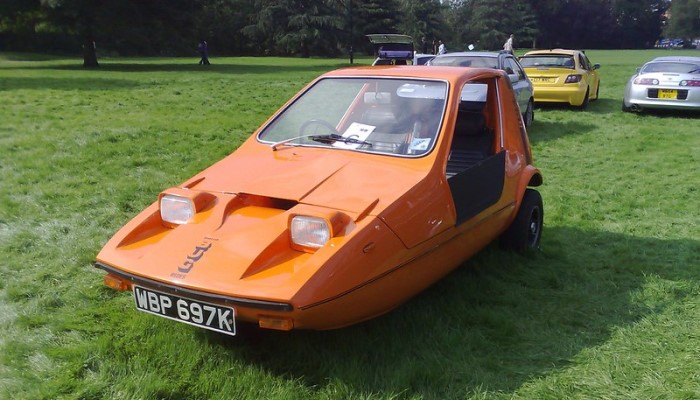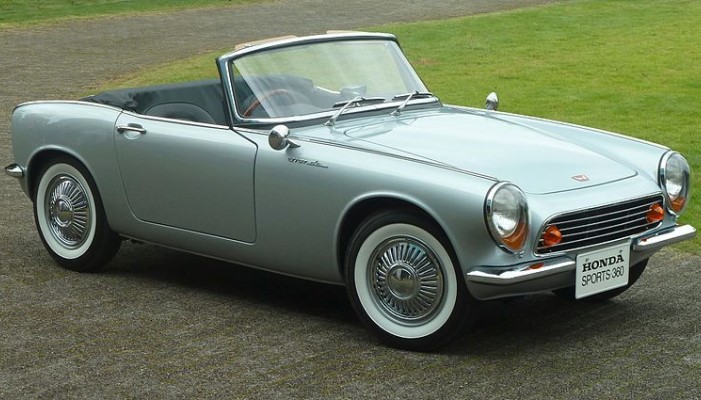Fuji Cabin
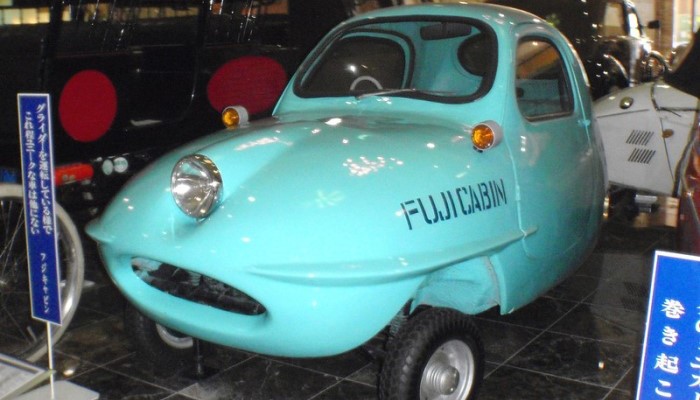
Photo: "Motorcar Museum of Japan" by Kzaral
Too Cramped, Even for the Japanese
The 1955 Tokyo Motor Show was an exhibition of commercial vehicles with a light splash of passenger cars. The ratio of almost three hundred trucks, pickups, and buses to a couple of dozen cars reflected the state of the Japanese economy in the 1950s.
The main bestsellers in the salon were Toyota cars: the Toyota Master RR and the Toyota Crown RS. But even such simple cars were beyond the means of the Japanese. The average consumer had enough money for a modest tricycle.
There were plenty of tricycles at the 1955 auto show. For the first time, Fuji Toshuda Motors presented its product to the public. The tricycle of this company was created by an engineer who had recently worked on a jet-propelled kamikaze projectile.
Fuji Toshuda Motors grew out of the ruins of Japan's aviation industry. The former Hitachi Aviation employee also joined this company. It was Hitachi engineers who developed the engine for the legendary Ohka missile aircraft. After the war, they had to switch to producing civilian products. The main brainchild of Fuji were motorcycles with a two-stroke engine called Gasuden.
In 1952, the directors of Fuji decided to boldly step forward and master the production of more solid equipment with a closed body and three wheels instead of two. The Japanese buyer became more capricious, but there was still not enough money for full-size cars.
The era of tricycles was beginning on the Japanese market. Many manufacturers wanted to jump on the bandwagon. The big bosses from Fuji were planning to jump in with the help of Nissan Motors Ltd. This company was ordered to develop the project.
Development and Design
The Nissan team quickly got down to business. It soon became clear that the Fuji directors and Nissan engineers had very different ideas about the future microcar. For some time, the parties tried to find common ground, but it did not work. It was decided to rely on their own skills.
The design of the microcar was done by Ryuichi Tamiya. He was a venerable Japanese designer with pre-war experience. He has done design projects for trucks, buses, etc. The result of Tamiya's efforts can be assessed as quite successful, considering what kind of freaks were found in the menagerie of the Japanese automobile industry. Compared to them, Fuji Cabin looked quite nice.
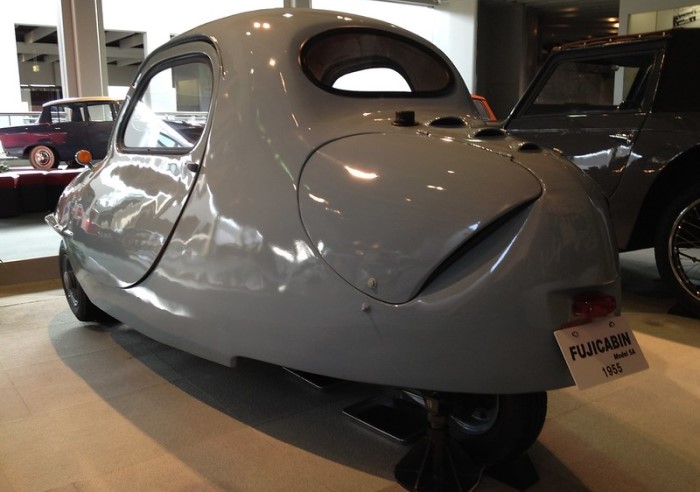
Photo: "Fuji Motors Fujicabin Model 5A, 1955" by kemeko1971
It was up to Hitachi Aviation engineers to embody Tomiya’s ideas in metal, or more precisely, in plastic. And here, the aviation past showed up in full force. The body of the future microcar was a fiberglass monocoque.
On the prototypes, there was only one door near the body. If the device fell on the wrong side, then no one could leave it. This is the heavy legacy of the Ohka projectile. The Fuji Cabin body turned out to be the most problematic part. It took a long time to bring it to mind, tediously and with modest success.
But there were no problems with the power unit. The proven Gasuden engine was used. Two-stroke, single-cylinder, displacement 7.4 ci (121.7 cc), power 5 hp, two-speed gearbox. This engine accelerated the device to a maximum speed of 28 mph (45 kph).
Collapse of Sales Plans
Despite the debut of the Fuji Cabin in 1955, the microcar only reached buyers in 1957. The year was spent preparing for mass production of fiberglass bodies, improving manufacturing quality, and reducing costs.
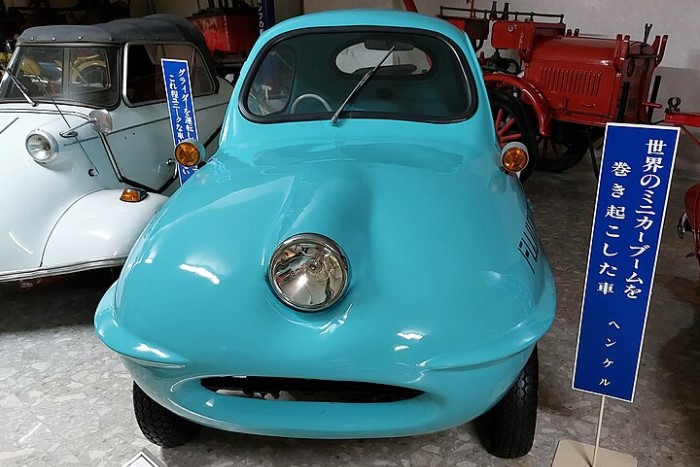
Photo: "Fuji Cabin Motorcar Museum Japan" by MikaPr65
The company's sales plans were bold—as much as 400 or 500 units per month. The reality turned out to be much sadder. During the year, they managed to sell only 85 pieces. Fuji Cabin cost the equivalent of $650. Which is a relatively small amount. A Honda Dream motorcycle with a 250-cc engine cost $490.
The advantages of the price were negated by the design flaws of the tricycle. The cockpit of the Fuji Cabin turned out to be very cramped, even for the Japanese, which did not add to the popularity of the microcar. Competitors offered much more convenient small-format cars. In 1958, Fuji Cabin production was discontinued.
Present Fate
Now the Fuji Cabin is repeating the fate of many previously misunderstood cars. The device turned out to be a small-scale production, which means that few of them survived, which immediately gave this miracle the status of a collectible item. Currently, approximately five Fuji Cabins are known to be in varying states of preservation.

Unique Car Zone Team
A group of several fans of everything that moves on four wheels, a few article creators, a couple of marketing strategists, designers, web developers, and lots of coffee.




